Get PeakVisor App
Sign In
Search by GPS coordinates
- Latitude
- ° ' ''
- Longitude
- ° ' ''
- Units of Length

Yes
Cancel
Share ×

Scan the QR code and open PeakVisor on your phone
❤ Wishlist ×
Choose
Delete
Situated in the Bow Valley corridor of the Rocky Mountains, about 130 km (81 mi) west of Calgary, Alberta, Banff is a picturesque mountain town that caters to tourism and wilderness recreation. The town is within Banff National Park and is the birthplace of Canada’s national parks. There is only 1 named mountain within the town’s boundaries: Tunnel Mountain (1,692 m/5,551 ft).
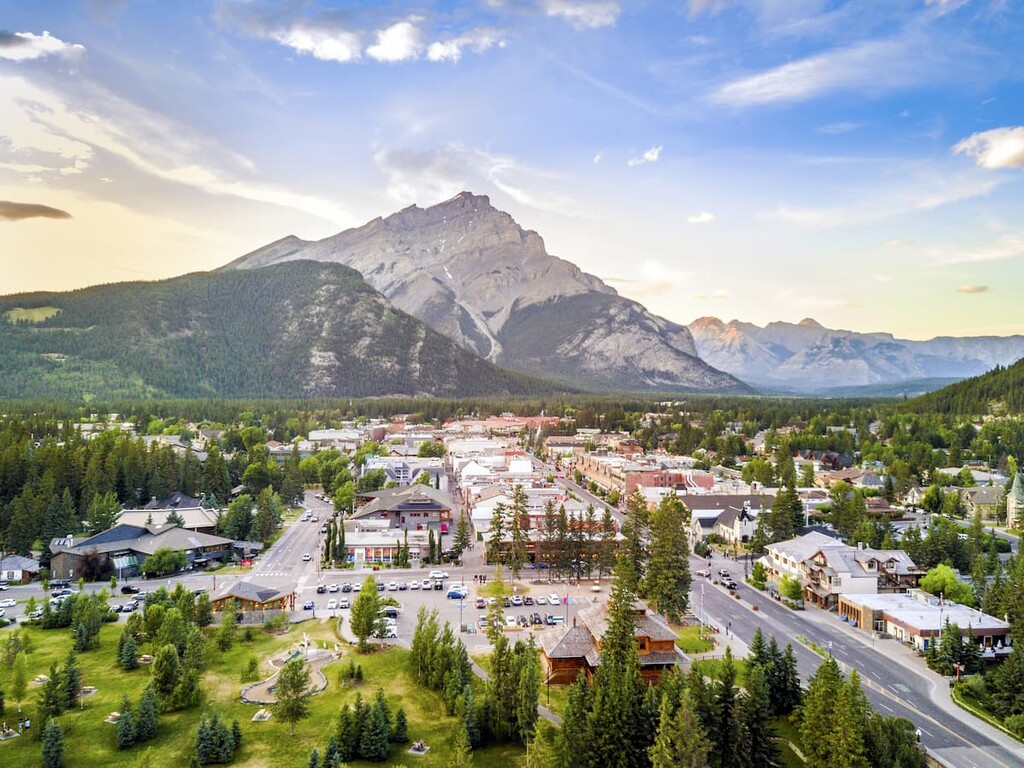
The town of Banff is a small community nestled in the heart of the Canadian Rockies within the province of Alberta, Canada. Banff has a total land area of about 4.77 square kilometers (1.84 square miles), so it’s quite a small community in terms of its total area. However, it has a population of around 8,000 residents, as people are often attracted to the town’s amazing outdoor recreation opportunities.
Banff is located within Improvement District No. 9 and it is situated close to Alberta’s border with British Columbia. The town itself is situated along the banks of the Bow River, which begins high up in the mountains and descends eastward toward the prairie of Alberta, where it joins the Oldman River before eventually emptying into the Nelson River in Manitoba.
Furthermore, Banff is pretty much completely surrounded by both mountains and Banff National Park. While Tunnel Mountain is technically the only peak within the town’s boundaries, there are other nearby peaks that are worth mentioning, such as Mount Rundle.
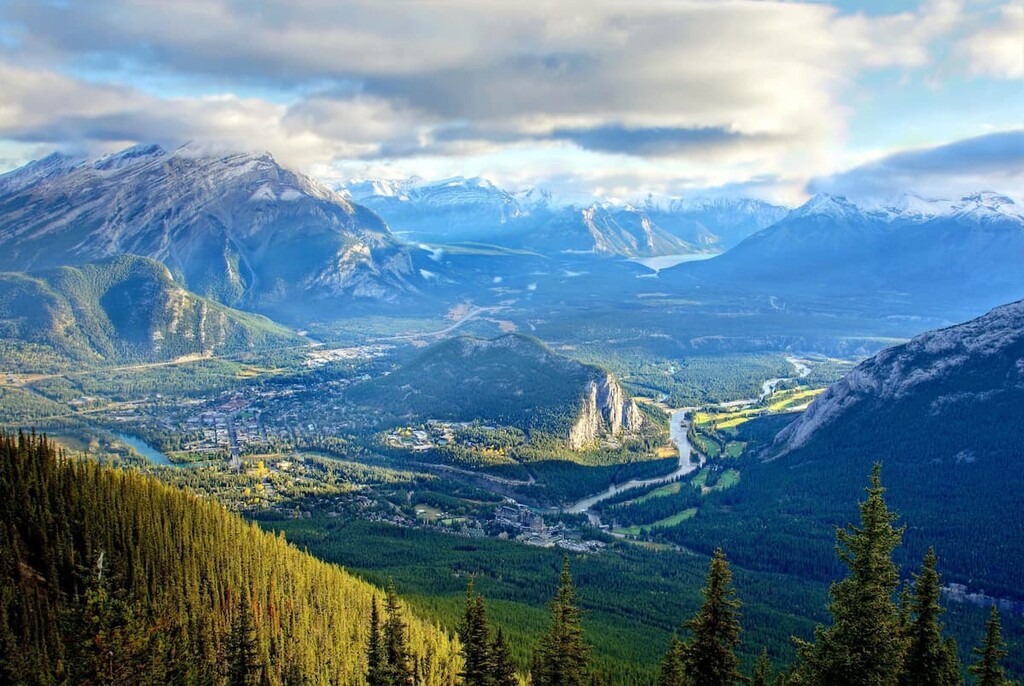
Located at the confluence of the Spray River with the Bow River, Banff is surrounded by many mountains and ranges. It is also the second highest town in Alberta.
The mountains that border the town of Banff are Tunnel Mountain, Mount Rundle, Sulphur Mountain, Mount Norquay, and Cascade Mountain. Mount Rundle shows the characteristic geology of the area, which is massive slabs of limestone and dolomite that have been thrust up to look like writing desks.
Being located among so many mountains, it’s no wonder the late nineteenth and early twentieth centuries brought so many adventurers. The ranges surrounding Banff are the Fairholme Range, Palliser Range, Vermillion Range, Sundance Range, and the Goat Range.
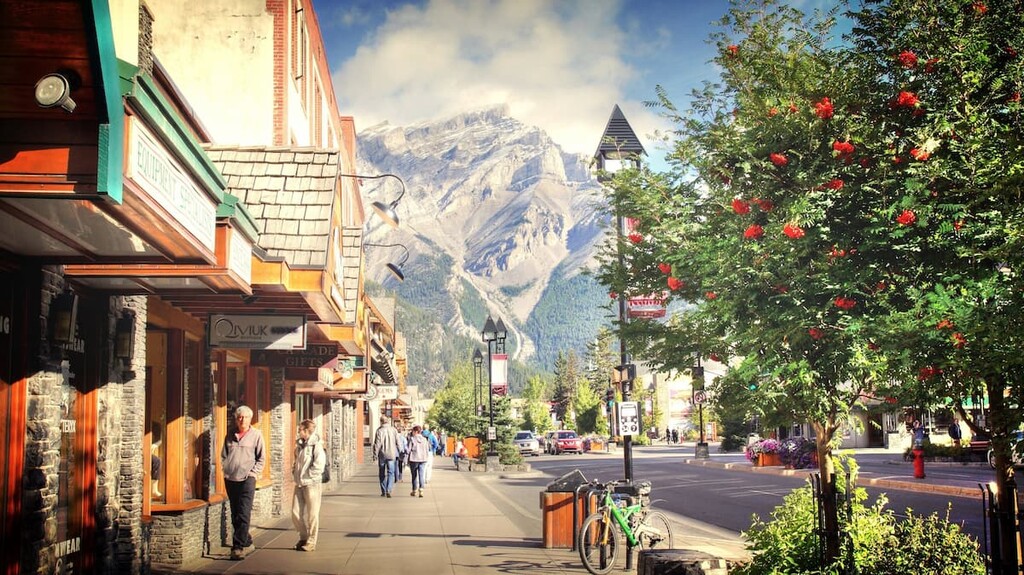
Most of the first known ascents of the peaks in these ranges were from visitors that took the train to Banff in the late 1800s and early 1900s. Mountaineering during that time was not the sport it is now; however, many bold and daring individuals pitted themselves against the mountains here.
The mountain scenery will initially attract a visitor to the area and the luxury accommodations will ensure their comfort; however, the highlight of a Rocky Mountain vacation is the peace and serenity of being up close with nature, walking among the trees, smelling the wildflowers, hearing the birds, feeling the bark of a tree.
The vegetation around Banff is characterized by forests of Douglas fir, lodgepole pine, and trembling aspen with patches of grassland on dry sites. Along the rivers and creeks white spruce, balsam poplar, and meadows full of shrubs will grow. These are the habitats for most species of animals that live in the Rocky Mountains.
The wilderness that surrounds the townsite is full of wildlife, and you may see some of the large mammals such as moose, elk, or even bear in the town. However, conservation officials work to prevent human-wildlife encounters for the safety of animals and people. It’s more likely that you’ll see deer, chipmunks, and birds while in town. Some of the incredible birds to look out for are the grey jay, Rufous hummingbird, osprey, white-tailed ptarmigan, and the American dipper.
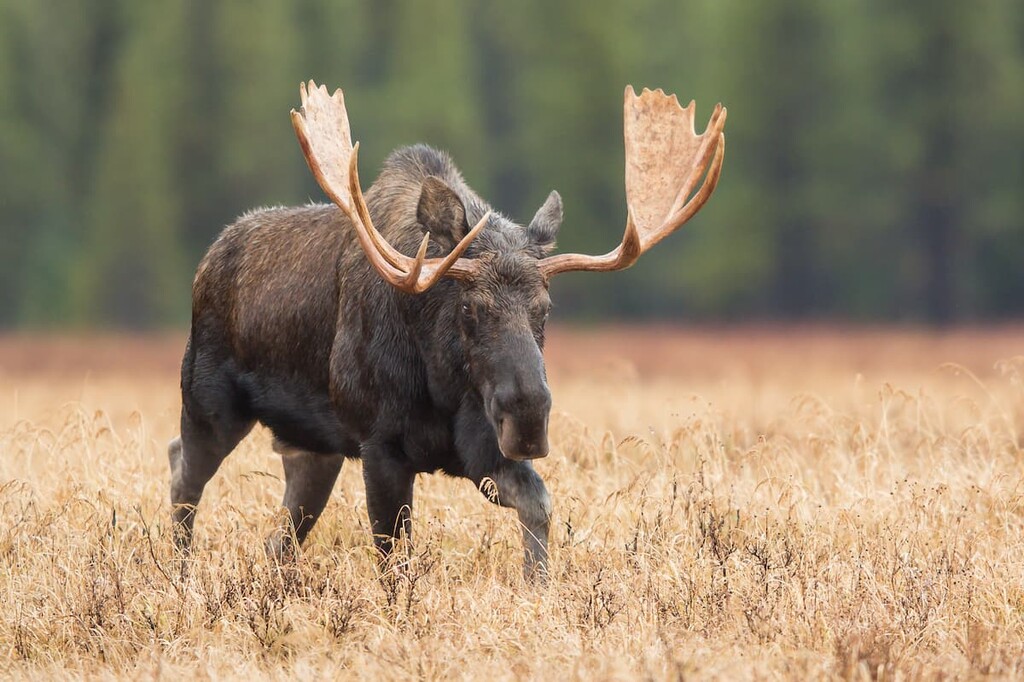
While the early twentieth century saw exponential growth in how many people came to Banff, the area has been inhabited for the past 12,000 years. The first known people to inhabit the area were members of the Clovis culture, who were big game hunters.
An ancient camp that dates back about 10,500 years was found on the nearby slopes of Mount Edith by Vermillion Lakes. As the ice sheet melted, mammoths, lion-like cats, camels, and giant bison started to inhabit the newly open valleys, and groups of people followed the animals.
For thousands of years, humans have lived and hunted in the Bow Valley and throughout the surrounding mountains. The area is traditional territory to the Tsuu T’ina, Stoney, Ktunaxa, and Blackfoot nations, though many First Nations were forced off their homelands with the arrival of European settlers.
It was the railway that brought Europeans and people of European descent to visit and settle in the area. In fact, upon witnessing the majestic scenery of the Rocky Mountains in the 1800s, the general superintendent of Canadian Pacific Railway, William Van Horne exclaimed, “if we can’t export the scenery, we’ll import the tourists.”
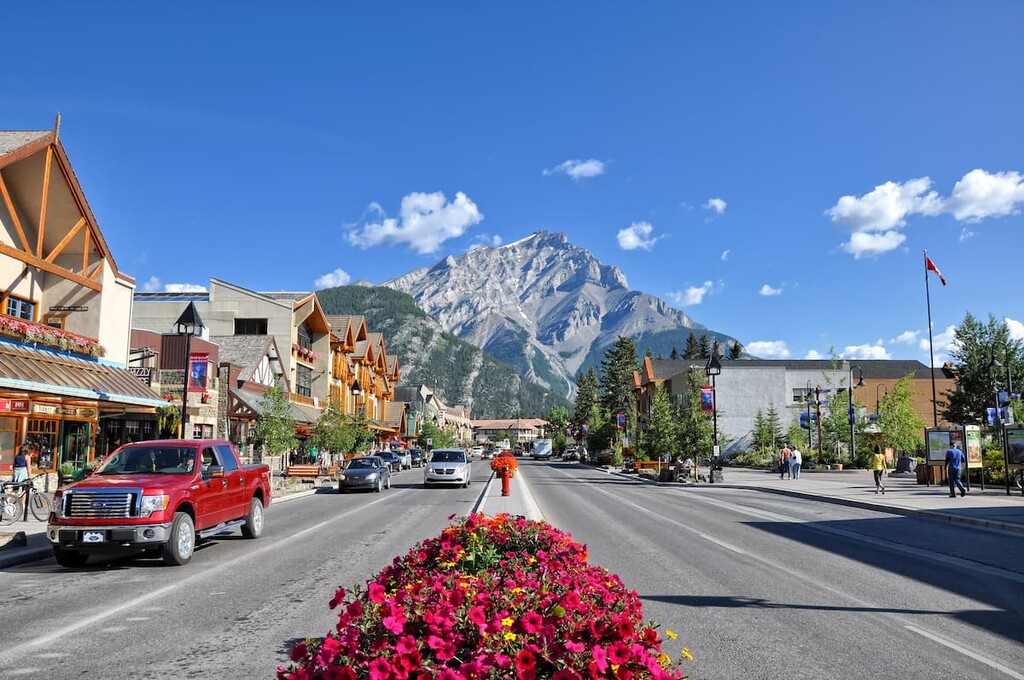
In 1883, workers from Canadian Pacific Railway encountered hot springs and tried to make a claim to them and the surrounding land. However, an ownership dispute ensued that got the attention of the federal government, who stepped in to resolve the dispute. The dispute ended in 1885 with the Canadian government maintaining ownership of the land and creating a 26 sq. kilometer (10 sq. mi) reserve around the springs.
However, a railway is very expensive and in order to pay for it, the railway company, Canadian Pacific Railway needed paying passengers. Canadian Pacific implemented a plan to attract visitors to the Rockies by train and provide them lodging and access to their chosen adventure. What started as additional services such as a dining hall and crude accommodations at rest stops along the railway were quickly developed into luxury hotels and resorts.
In 1887, Canadian Pacific built the Banff Springs Hotel with 250 rooms, which made it the largest in the world at the time. The hotel was upgraded and expanded over the next 50 years to be one of the most iconic buildings in the Rocky Mountains. Van Horne truly saw the economic potential of the Rocky Mountains and the Banff Springs Hotel is now only a small part of the “luxury wilderness vacation” mecca that Banff has become.
Rocky Mountains Park Reserve was also established in 1887 and it included both the hot springs reserve and additional lands surrounding it. This was the first national park in Canada, and it’s now known as Banff National Park. George Stephen, the president of Canadian Pacific Railway, named the town after his birthplace of Banff in Scotland. From its founding, the town of Banff’s primary goal has been to provide somewhere for tourists to come and enjoy the mountains and wilderness.
The wilderness around Banff is spectacular and the town has a lot to offer. A stroll down the main street takes you past museums that expound on the history of the area, art galleries that feature local artists, candy stores, restaurants, and much more. Banff hosts multiple events each year, such as the Snow Days, art festivals, the Banff Marathon, the Iniskim Powwow, and the Banff Centre Mountain Film and Book Festival, the latter of which highlights mountain themed films and books.
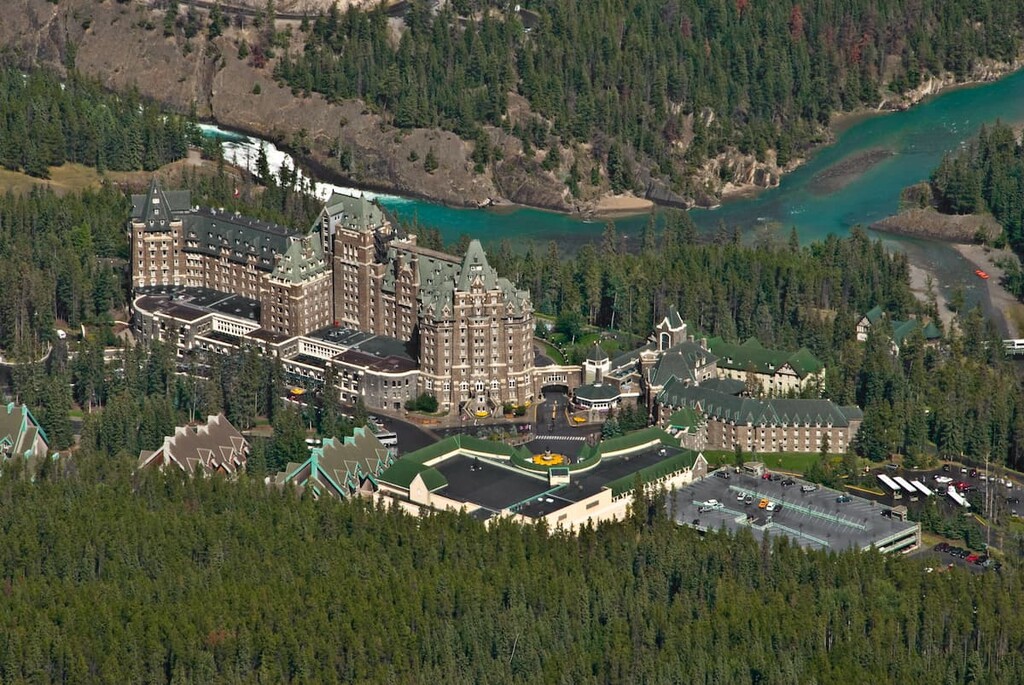
Additionally, Banff offers an interactive trail during the Christmas season that tells a Christmas story through hands-on features and art installations as you walk through the forest. Visitors can also come see the annual Mountain Madness Relay, which starts with downhill skiing and is followed by running, skating, snowshoeing, and cross-country skiing. It is a wild event that was truly inspired by Canadian Rocky Mountain winters.
Banff has been at the center of Rocky Mountain recreation for over a century, and with such a long history, many of the spectacular places are well developed and easy to find. The following are a few that will get you in touch with the heart and character of the town of Banff.
The trail through Bankhead is an easy 1 km (1.6 mi) loop that will give you a look back to the coal mining heyday at the beginning of the twentieth century. Located a short drive from Banff, Bankhead was a mining town from 1904 to 1922, and, at the time, it was the most modern town in Alberta.
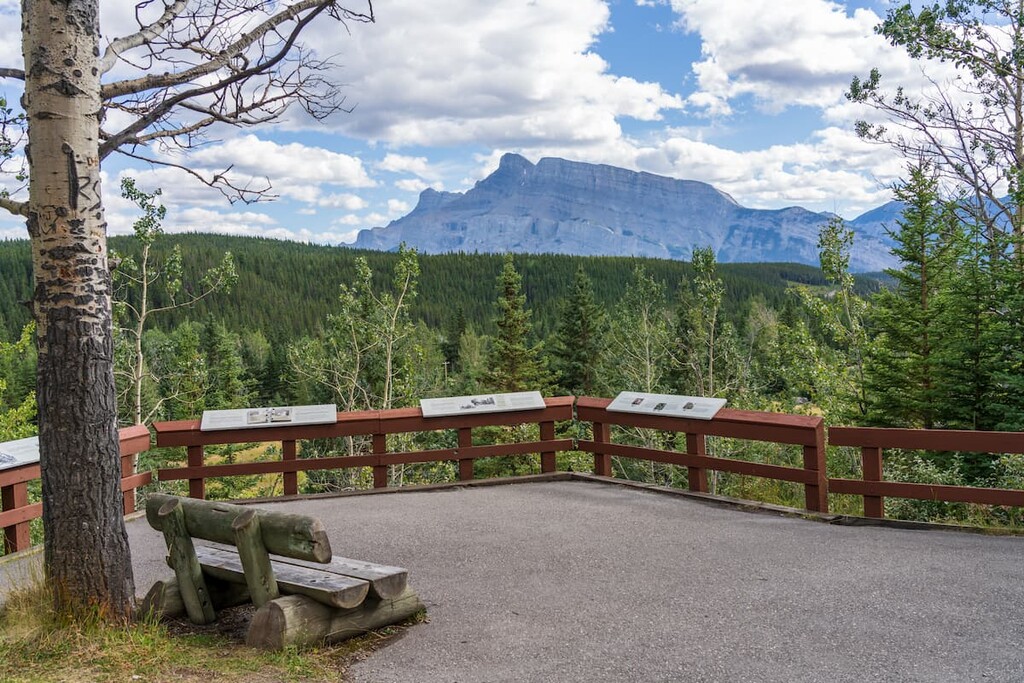
As the market for its coal dipped, Bankhead quickly declined and was left a ghost town by 1922. The trail takes you through where the town once stood, with abandoned coal carts and other machinery left behind that you can see along the trail.
The trail up Tunnel Mountain is located at the edge of town and is about 2.5 km (1.5 mi) to the summit with 265 m (875 ft) of elevation gain. From the summit, you have a view of the town of Banff, Mount Rundle, and Sulphur Mountain. You also get a good view of the Banff Springs golf course, of which nine of the 36 holes were built by German prisoners of war during World War I.
Due to its proximity to the town of Banff, this trail is heavily trafficked and the trail is well maintained; however, caution should always be taken to prevent wildlife encounters and bear spray is recommended on all hikes in the Rocky Mountains.
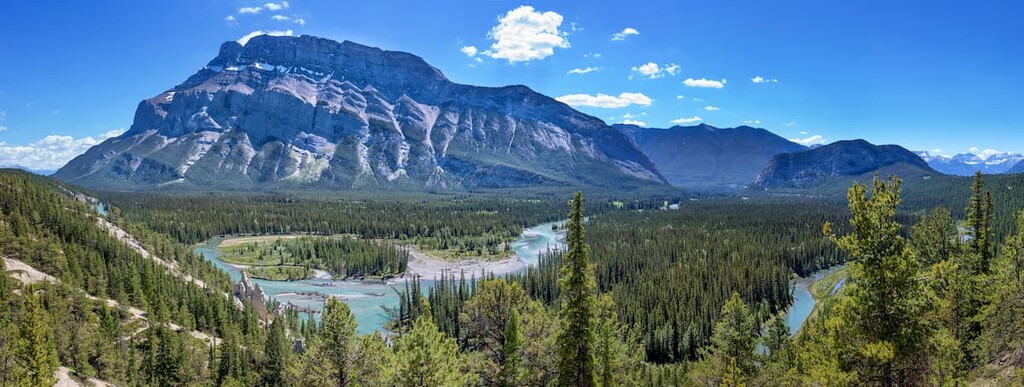
There are many interesting places to visit while in Banff, and the main one is the Cave and Basin National Historic Site. This is the location that ignited the demand and need for a system of national parks in Canada. The Cave and Basin is a great site to visit and this hike can take you past several other attractions, out into nature and back to town in a relatively short loop.
Starting in downtown Banff, head towards the Banff Park Museum and then the Buffalo Nations Luxton Museum. These museums showcase the history of the area from a European and an Indigenous perspective.
From the museums, follow your map to the Cave and Basin site for a tour. After your tour, you can take a stroll along the Marsh Loop to reconnect with nature before you head back into town, passing through the Cascade of Time Garden before you get back to where you started.
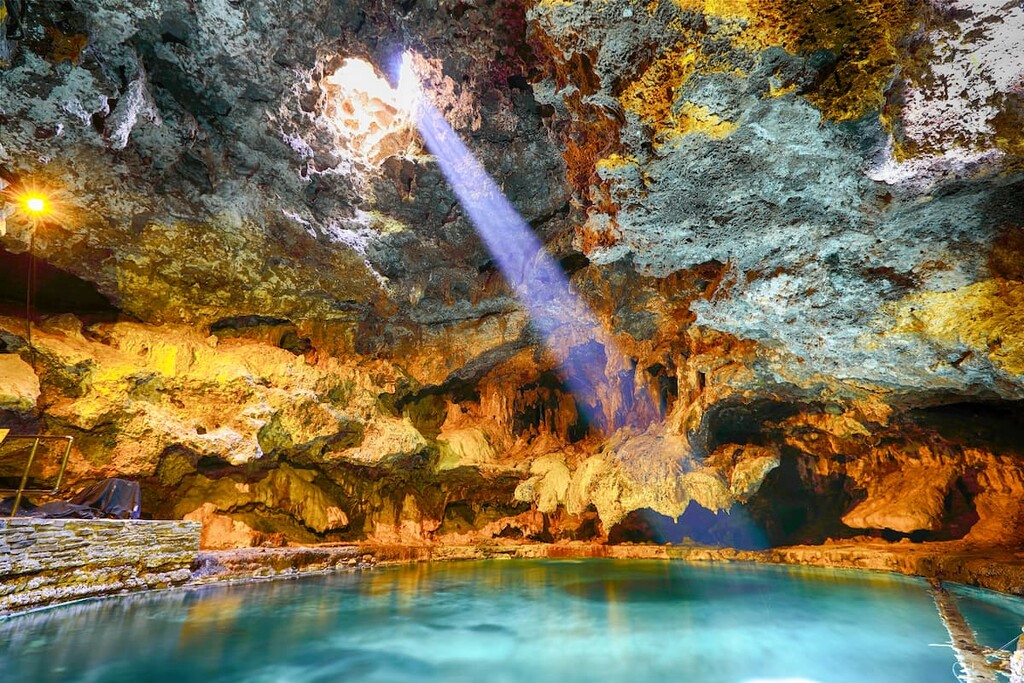
Mount Rundle is an imposing slab of limestone that is about 12 kilometers (7.5 mi) long, nearly 1 kilometer (1.6 mi) tall, and a dominant mountain along the Banff skyline. There are climbing and mountaineering routes upon the mountain, as well as an easy scramble to the eastern peak, which is unimaginatively called the East End of Rundle, or EEOR.
While not the true summit of the mountain, EEOR, is an easy route and a good hike on which to gain scrambling experience. The route takes you up the scree slopes on the south side, across a couple of points and up to the main peak on this side of the mountain.
From the summit, you will see vast expanses of mountains around you and we’d encourage you to use the PeakVisor app to give you an augmented reality view of the horizon, to provide you with the name and altitude of all the mountains you can see.
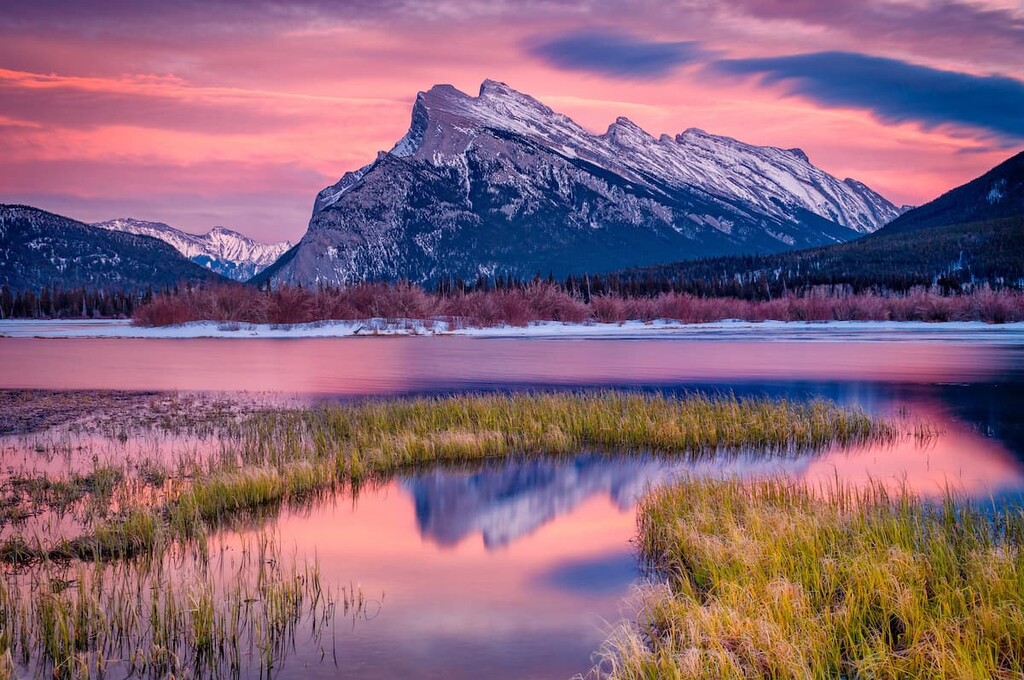
Banff is certainly a destination town; however, there are quite a few other places to explore if the crowds are too much for you to handle or if you’re looking for something different. Here are some of the other towns and cities to check out near Banff:
When travelling to Banff, Calgary is often seen as nothing more than an airport, or a pit stop. Once you get to Calgary it’s difficult to stop gazing west towards the mountains that spread across the horizon; however, if you are able to look around, you’ll find that Calgary has a lot to offer.
As the largest city in Alberta, Calgary has many events and attractions while in the city. There are cultural events that include concerts, ballet, opera, theatre, and rodeo. Museums and historic sites around the city focus on local history of this western city.
There are many festivals throughout the year, and the Calgary Stampede is a ten-day event billed as “The Greatest Outdoor Show on Earth," as it attracts visitors from around the world to its parade, midway, stage shows, concerts, agricultural competitions, chuckwagon racing, and First Nations exhibitions.
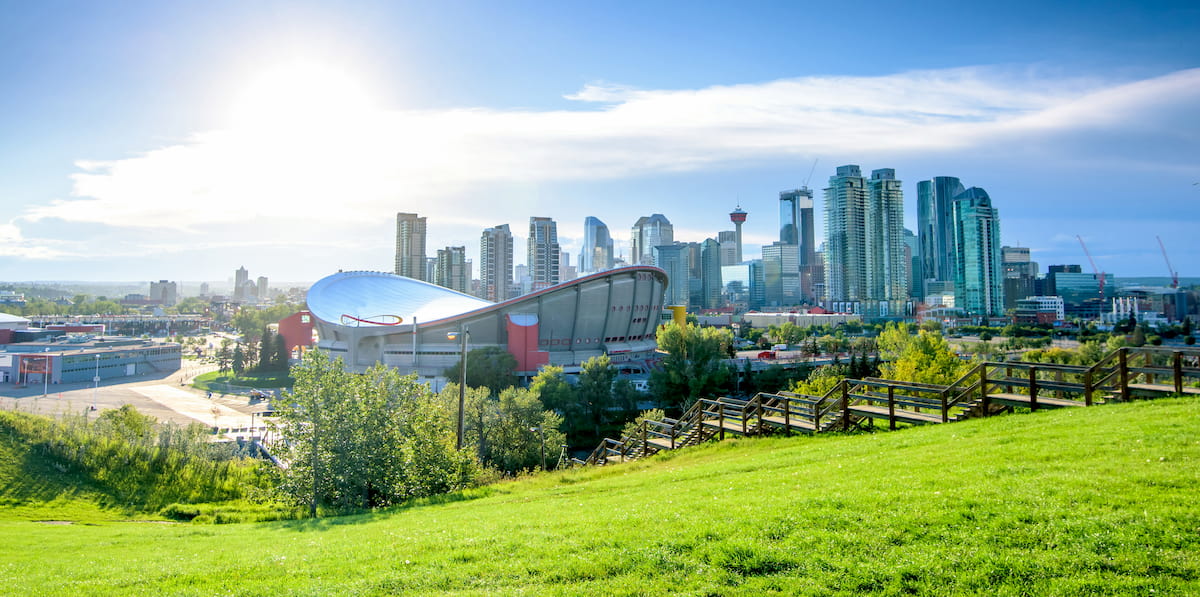
However much there is to do in Calgary, though, even locals will understand that you want to make it to the mountains. Nevertheless, the access to the Rocky Mountains, outdoor recreation, and wilderness adventure is one of many benefits of Calgary.
Located 58 km (36 mi) west of Banff, Lake Louise is the highest town in Alberta. A short distance from the town site along the highway, you will find the incredible turquoise waters of Lake Louise and the majestic Chateau Lake Louise all surrounded by some of the most spectacular mountains and scenery in the world.
Whether you want to canoe upon the beautiful waters, hike up to one of the tea houses, or simply enjoy a delicious meal at the Chateau, there are many ways to enjoy the area. Winter is especially busy around the lake, as the Lake Louise Ski Area draws crowds from all over the world, to say nothing of the daily visitors that come to go skating or snowshoeing on the lake.
The area is beautiful in the winter, and the Ice Magic festival takes it to a new level. During this event, artists pit their skills against each other and the elements in an ice carving competition that lasts for days. Afterward, the incredible sculptures that the artists create stay in the town there until they melt.
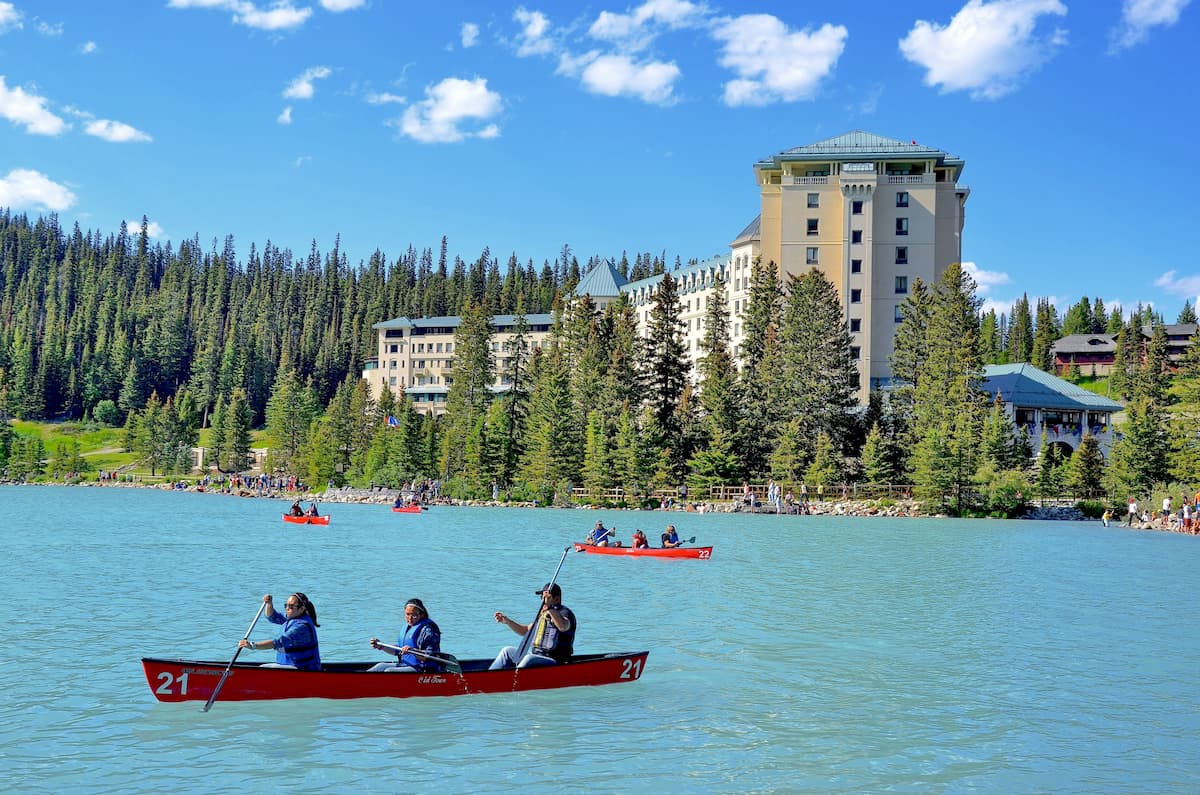
Located some 22 km (16 mi) east of Banff, Canmore is built against the eastern gates of Banff National Park. Canmore is a quaint mountain town with a mainstreet lined with lovely shops and galleries for locals and tourists, alike. There are countless activities in town and in the nearby mountains, such as hiking, cycling, fishing, skiing, and kayaking.
Canmore offers a variety of lodging, restaurants ranging from fat food to elegant, and shops to rent or purchase any gear you may need for your mountain adventures. It is a fun mountain town with its own culture, activities, and events that are well worth checking out.
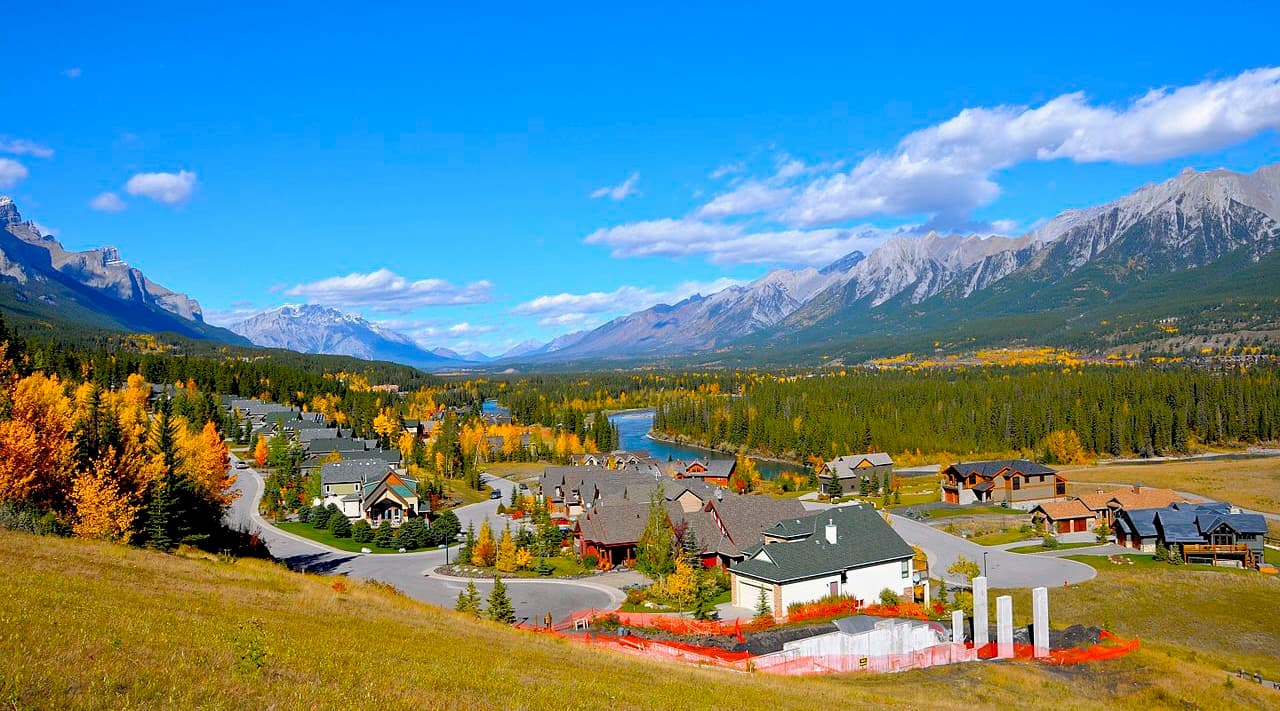
Explore Banff with the PeakVisor 3D Map and identify its summits.








